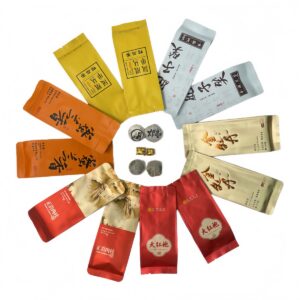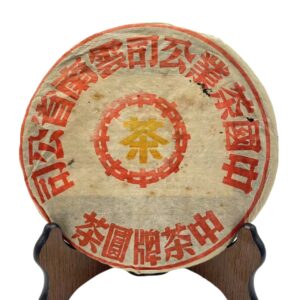Pu Erh tea as coffee alternative provides a soothing ritual that warms the soul while delivering gentle, sustained energy. Imagine cradling a warm cup of deep amber liquid, its earthy aroma rising like morning mist over a serene tea plantation. As you lift the cup to your lips, you feel the tension of an early morning deadline melt away.
That first sip—a layered taste of aged bark, mellow Loess soil, and a whisper of dried fruit—awakens your senses without the harsh jolt of espresso. In contrast to coffee’s rapid spike and sudden crash, pu er tea delivers a calm, rolling uplift, ideal for anyone seeking a more balanced pick-me-up. In this article, we’ll explore why pu er tea as coffee alternative has become a favorite among health-conscious individuals, especially those looking to cut back on coffee while still enjoying focus, energy, and a moment of mindful pause.
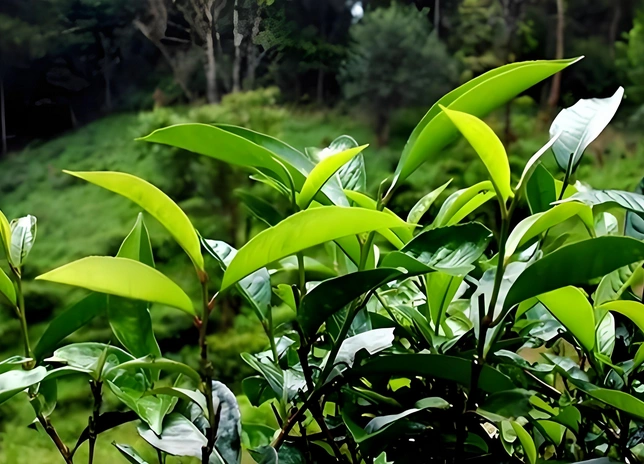
Why Choose Pu Erh Tea as Coffee Alternative
Healthier Caffeine Experience: Pu Erh Tea Caffeine vs Coffee
When you consider pu er tea as coffee alternative, the first question is often: how does its caffeine compare? Coffee’s 8-oz. cup can contain 95–165 mg of caffeine, delivering an immediate rush. Pu er tea, by contrast, offers around 30–50 mg per 8-oz. cup, depending on leaf quality and steeping time. This lower level of stimulation means you avoid the jittery spike and subsequent crash coffee often produces. Instead, pu er tea caffeine content unfolds more gradually. As the warm infusion glides down your throat, you feel a smooth, lingering warmth grow in your chest—a steady surge of alertness that does not assault your nervous system. Over the next few hours, you maintain focus without the peaks and valleys that come with coffee. For students working on complex projects or professionals tackling afternoon meetings, this steady flow can make all the difference.
Unique Flavor and Ritual Compared to Coffee
Beyond caffeine considerations, pu er tea as coffee alternative offers an entirely different flavor journey and ritual. Whereas coffee aficionados savor a dark, roast-forward bitterness, pu er tea drinkers delight in a spectrum of earthy, woody, and subtly sweet notes. When you open a tin of high-quality pu er, you’ll notice a faint aroma reminiscent of damp forest floors and aged cellars. As the leaves steep and unfurl, they transform a clear stream of water into a warm tea with a velvety mouthfeel. Each sip conjures visions of misty mountainsides where the tea was aged for months or even years. This ritual—rinsing the leaves, inhaling the aroma, and savoring each slowly steeped infusion—adds a mindful dimension to your day. Instead of gulping down a latte at your desk, you set aside five minutes to steep pu er, letting its nuanced aroma reset your mental state. In the process, pu er tea as coffee alternative becomes not only a beverage choice but a moment of sensory restoration.
Understanding Pu Erh Tea Caffeine Content
How Much Caffeine Is in Pu Erh Tea? (Pu Erh Tea Caffeine Content)
Knowing pu er tea caffeine content helps you plan your day and avoid overstimulation. On average, a typical 8-oz. cup brewed from loose pu er sheng (raw) or shou (ripe) leaves contains 30–50 mg of caffeine. However, factors like leaf age, fermentation level, and steeping temperature can influence the exact amount. For instance, a longer steep at higher temperatures (95–100°C) can extract more caffeine from compressed pu er cakes, edgeing toward 60 mg per cup. Conversely, a shorter, gentler steep may yield closer to 20–30 mg. By adjusting steeping time—say, 30 seconds to 1 minute for a lighter cup—you can fine-tune your intake. This empowers you to match your caffeine needs: a stronger brew in the morning for alertness, a milder infusion in the afternoon to avoid disrupting sleep. Understanding pu er tea caffeine content lets you enjoy its warm, earthy flavors while maintaining complete control over your daily stimulant levels.
Pu Erh Tea Caffeine vs Coffee: What You Need to Know
The comparison between pu er tea caffeine vs coffee underscores why many make the switch. Coffee’s caffeine absorption is swift: within 30–60 minutes, it floods your bloodstream, triggering a rapid adrenaline surge. This can lead to feelings of nervousness, heart palpitations, and a sharp energy crash. Pu er tea’s caffeine lifts you gently: its unique fermentation process binds caffeine to polyphenols, slowing its release. As you sip pu er, the caffeine travels more gradually through your system, providing sustained mental clarity without spikes. Studies have shown that regular pu er consumption can improve mental performance and mood stability, thanks to this tempered caffeine dynamic. For caffeine-sensitive individuals, pu er tea caffeine vs coffee often provides the sweet spot: enough boost to enhance concentration, but without that edgy buzz or late-afternoon slump. By embracing pu er, you can foster steady work productivity and a calmer sense of well-being.
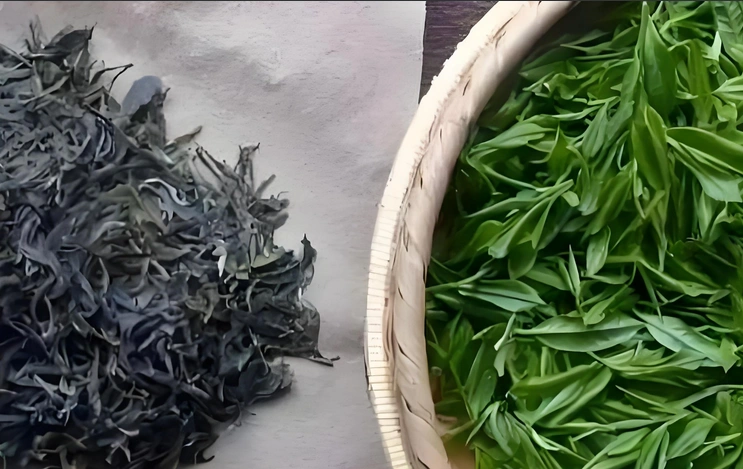
Benefits of Pu Erh Tea for Study Focus and Productivity
Sustained Alertness without Jitters
Students and professionals alike know the agony of an impending deadline. When fatigue sets in, grabbing another cup of coffee can feel like the only option—until the jitters and shaky hands follow. Enter pu er tea for study focus: a gentler path to mental clarity. Thanks to its moderate caffeine and rich polyphenol profile, pu er awakens your cognitive functions without overtaxing your nerves. Imagine yourself studying late into the evening, notes spread out on the desk, eyes blurred from screen glare. You steep pu er leaves in a small pot, infusing the air with a soothing, earthy aroma. Each sip is smooth, leaving a hint of dark chocolate and damp cedar behind. The mild warmth envelops your mind, sharpening attention and fostering a receptive mental state. Over the following hours, you remain alert and engaged—reading, writing, problem-solving—without the anxiety or energy crashes of coffee. Whether you’re cramming for exams or drafting intricate reports, pu er tea for study focus is a steadfast companion, letting you traverse long study sessions with clear eyes and a calm spirit.
Comparing Pu Erh Tea and Oolong Tea for Concentration
Many tea enthusiasts also turn to oolong tea when they need a clean, crisp mental lift. Both oolong and pu er share origins in China’s tea traditions, yet their concentration-boosting effects differ in notable ways. Oolong tea—partially oxidized—presents delicate floral or lightly toasted notes, often delivering 35–55 mg of caffeine per cup. Its aroma can feel like walking through a blooming orchid garden, offering gentle uplift. Pu er tea, with its additional fermentation, provides deeper, more grounding flavors—earth, aged wood, and subtle sweetness—paired with a slightly lower but more stable caffeine boost. For quick mental refreshers, oolong tea can be ideal: a brisk, fragrant sip to banish fog. But for extended periods of intense focus, pu er tea for study focus holds its ground: its caffeine release is slower, its flavors more meditative, and its energy longer-lasting. Combining both teas throughout the day—oolong in the morning, pu er in the afternoon—can deliver a spectrum of cognitive benefits, ensuring peak performance without overstimulation.
Additional Health Benefits Beyond Caffeine
Pu Erh Tea and Metabolism Support
Coffee alternative aside, pu er tea offers metabolic benefits that coffee simply cannot match. Studies suggest that pu er’s unique microbial fermentation yields compounds—like theabrownins—that help regulate lipid metabolism. For office workers who spend long hours seated, this can be invaluable: a cup of pu er with breakfast or after lunch can gently stimulate your digestive system, support healthy cholesterol levels, and encourage fat metabolism. Picture sipping pu er after a midday salad, noticing how the tea’s warm, rustic flavors encourage you to eat and digest mindfully. Over weeks, you may find your energy levels stabilize, afternoon cravings diminish, and your body composition subtly shift. By choosing pu er tea as coffee alternative, you gain not only mental clarity but also support for your metabolic health—an essential perk for anyone striving to feel lighter and more energized.
Antioxidant Properties: Oolong vs Pu Erh
Beyond invigorating your mind, both oolong and pu er boast strong antioxidant profiles. Oolong tea’s partial oxidation preserves catechins and theaflavins—potent antioxidants that neutralize free radicals and promote cardiovascular health. Pu er tea, with its post-fermentation process, takes antioxidants a step further: it converts some catechins into unique theabrownins, compounds shown to support liver detoxification and reduce oxidative stress. Imagine your body like a finely tuned instrument constantly buffeted by environmental toxins and mental stress. Each sip of pu er bathes your organs in protective antioxidants, gently clearing oxidative debris and nurturing cellular resilience. Alternating between oolong and pu er ensures you receive a broad spectrum of these beneficial compounds. While pu er tea as coffee alternative gives you a mental lift, it simultaneously furnishes your body with these antioxidants—offering a holistic approach to wellness that pure coffee simply cannot replicate.
How to Brew Pu Erh Tea for Optimal Enjoyment
Simple Steeping Methods at Home or Office
Brewing pu er tea as coffee alternative can be both simple and rewarding. For busy office workers, a straightforward method may be best:
- Choose Quality Leaves: Invest in loose-leaf pu er cakes or shou (ripe) tea.
- Quick Rinse: Place 5–6g of leaves in a mug or small teapot. Rinse with boiling water (100°C) for 10–15 seconds, then discard this water to remove dust and “wake” the leaves.
- First Steep: Pour in 95–100°C water, filling your mug. Steep for 2–3 minutes for a balanced brew.
- Enjoy and Re-Steep: Pour into a separate cup, savoring the first infusion’s deep, earthy aroma. Refill the leaves for a second steep of 3–4 minutes; each infusion brings out additional layers—smooth chocolate, a hint of camphor, and mellow sweetness.
This easy method yields 2–3 satisfying brews before the leaves quiet. The ritual of a quick rinse and mindful steeping offers a moment of calm during a hectic day. The resulting pu er tea as coffee alternative gives you both comfort and focus.
Gongfu Style for Fuller Flavor
For a deeper, more immersive experience—perhaps on a day when you have extra minutes—try a simplified Gongfu-style brew:
- Equipment: Use a small gaiwan or 100–150ml Yixing teapot.
- Leaf Quantity: Add 6–8g of high-quality pu er leaves.
- Rinse and Warm: Rinse leaves with hot water for 10 seconds, then pour out the water and warm your gaiwan.
- Short Steeps: Brew for 10–15 seconds with water just below boiling, pour into small tasting cups.
- Incremental Increases: Add 5–10 seconds to each subsequent steep. You can enjoy 5–7 infusions—each unfolding new aromas of dried plum, warm oak, and tingling minerality.
This method takes a bit more attention but rewards you with a tapestry of flavors unfolding gradually. In an office context, perhaps during a longer conference call, Gongfu-style pu er tea as coffee alternative transforms routine into a refined ritual—an oasis of sensory delight that recharges your mind and spirit.
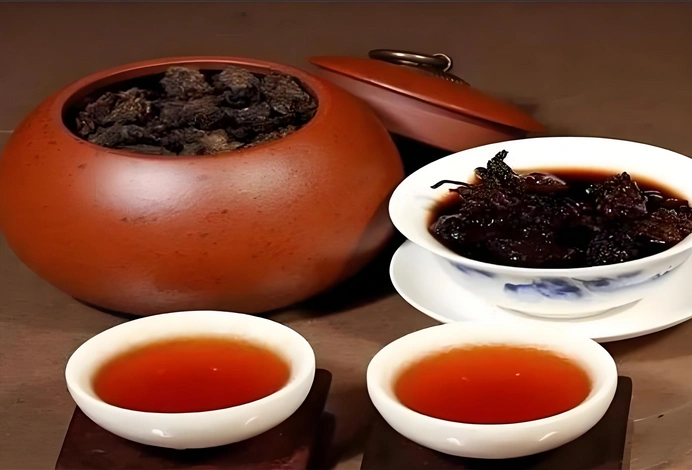
🔗 To learn more about how to make tea, check out Tbiwencha’s YouTube video explaining how to make tea.
Incorporating Pu Erh Tea into Your Daily Routine
Morning Replacement for Your Daily Cup of Joe
For many, the day cannot start without coffee. But by swapping that first cup for pu er tea as coffee alternative, you still achieve a morning ritual with a gentler twist. Set your alarm a few minutes earlier, gather loose pu er leaves, and brew a balanced 2–3 minute infusion. As the tea steeps, its earthy aroma fills your kitchen—notes of rich humus, aged cellar, and a touch of sweet wood. You might pair it with a slice of whole-grain toast or a bowl of steel-cut oats topped with berries. The warmth of pu er moistens your throat, and the balanced caffeine lift sets your brain in motion without the rapid spike coffee delivers. By 10 AM, you’re alert, focused, and free from jitters, ready to tackle projects with steady mental clarity. For those seeking an early-day edge that promotes overall wellness, making pu er tea as coffee alternative the centerpiece of your breakfast is a transformative choice.
Midday Boost Without the Crash
By late morning, your initial alertness inevitably wanes. At many offices, this is when folks reach for another espresso shot or sugary snack. But by 12–1 PM, that short-lived buzz can reverse into a frustrating crash. Instead, brew a cup of pu er tea as coffee alternative around lunchtime. Its moderate caffeine content and probiotic compounds help digest your meal and provide a second wave of clean energy. Picture finishing up a protein-rich salad and then steeping pu er in your desk mug. As you sip, the tea’s warm, earthy notes—reminders of damp forest and aged spice—guide your senses back to the present. The mild lift refreshes your attention, and the tea’s fermentation-derived theabrownins assist your metabolism, mitigating that sluggish “food coma” feeling. With your body primed and mind reengaged, you return to tasks feeling revitalized rather than drained. This approach highlights how pu er tea as coffee alternative can seamlessly slot into your workflow, extending your productivity into the afternoon.
Potential Drawbacks and Considerations
Taste Profile Adjustments for Coffee Lovers
Switching from coffee to pu er tea as coffee alternative may initially feel like trading bold intensity for subtlety. Coffee lovers often cherish its dark roast bitterness, crema, and pungent aroma. Pu er’s taste—earthy, mellow, with notes of aged wood and forest floor—requires a transition period. Start by blending your first few batches with a splash of steamed milk or a hint of honey to soften the earthiness. Over time, allow your palate to adapt: let the smooth, fermented sweetness and lingering warmth gradually replace your craving for coffee’s bite. Engaging in sensory mindfulness—closing your eyes, inhaling pu er’s layered aroma, and focusing on its texture—can accelerate your appreciation. Once you become enamored with pu er’s tranquil complexity, you may find coffee’s acrid edge less inviting. Embrace this journey from pu er tea as coffee alternative, savoring each nuanced flavor evolution.
Caffeine Sensitivity and Timing
Although pu er tea as coffee alternative offers a gentler caffeine lift, it still contains moderate amounts. If you’re especially sensitive to caffeine, even pu er can disrupt your night’s sleep if consumed too late. To prevent insomnia, avoid pu er tea caffeine content after 3–4 PM. Consider a lighter, shorter-steeped infusion (steeping for only 30–45 seconds) to extract fewer stimulants. Alternatively, some low-caffeine pu er variants, processed specifically to reduce caffeine, are available. Tailoring your steep time and choosing an appropriate pu er type ensures you receive the advantages of pu er tea for office workers without compromising sleep quality. Monitor your personal tolerance and adjust accordingly: the goal is to harness pu er’s balanced energy while preserving your evening rest.
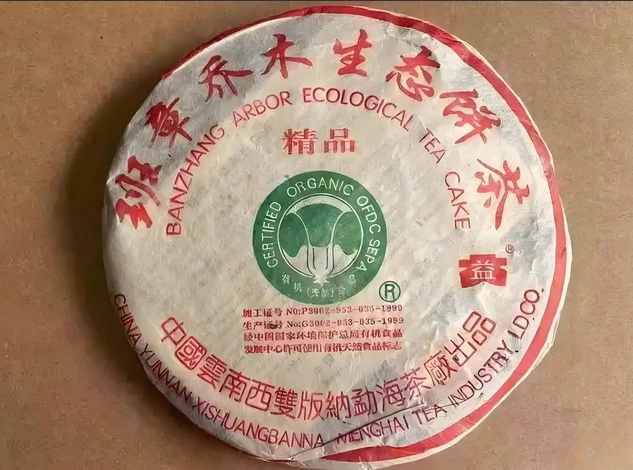
Conclusion: Embrace Pu Erh Tea as Coffee Alternative
In a world driven by deadlines, endless to-do lists, and the lure of quick caffeine fixes, pu er tea as coffee alternative stands out as a wiser, more holistic choice. Its moderate caffeine release, slow-building alertness, and rich, layered flavors offer mental clarity without jittery spikes. Beyond stimulation, pu er brings probiotic and metabolic benefits, supporting digestion, immune health, and long-term vitality. By mastering simple brewing techniques—whether a quick steep or a mindful Gongfu ritual—you can weave pu er’s warmth and depth into every phase of your day: morning wakefulness, midday focus, and afternoon resurgence.
For coffee lovers willing to explore new horizons, pu er tea as coffee alternative offers a transformative path—trading frenetic energy for calm resilience, trading rapid sugar crashes for sustained well-being. Embrace a cup of pu er tomorrow morning, let its ancient aroma guide your senses, and discover how this timeless tea can become your daily beacon of health, focus, and serenity.

